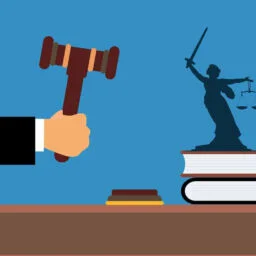INTRODUCTION
The term “maintenance” is a wide concept and has no precise definition. Under the Indian context, it includes entitlement to the basic needs, i.e., food, clothing and shelter usually claimed by the wife, parents or children. There can be other inclusions also other than food, clothing and shelter. Right to Maintenance is a measure of social justice. It is the natural duty of a man to maintain his wife, children and parents when they are unable to maintain themselves.[1]
India is a country of diverse religions and maintenance can be claimed both under Personal laws as well as the Criminal Procedural Code, 1973 which provides a uniform statute applicable irrespective of the religion or faith an individual follows. The nature of the proceedings under Section 125(c) of the Criminal Procedural Code, 1973 is criminal. Section 125(c) provides that any legitimate or illegitimate child of a father can claim maintenance on the grounds of physical or mental illness due to which he or she is unable to maintain himself or herself.[2] Section 125(c) expressly excludes a major married daughter.
Under the said Section, a son or a daughter, legitimate or illegitimate who is physically or mentally unfit, can claim maintenance from his or her father even after attaining majority, i.e., even after the age of 18. However, the judiciary has delivered several judgements where it has granted maintenance to a major son in exceptional circumstances. The idea of granting maintenance is to see that the wife and children get a standard of living on par with the husband. If a son reaches the age of eighteen, it does not mean that as from that date he has to starve. The law does not provide that. It only means that as from the age of majority, i.e. eighteen the law takes note of the fact that he has capacity to earn. But if he is still dependant on his mother either for study or for shelter, that fact will have to be taken into account, when a mother (or wife) is given maintenance. He is not given any maintenance. But the one who looks after him gets it.[3]
Recently, in the landmark case of Urvashi Aggarwal v. InderPaul Aggarwal[4], the Delhi High Court, in June 2021, held that “it cannot be said that the obligation of a father to maintain his son cannot come to an end when his son reaches 18 years of age and the entire burden of his education other expenses would fall only on the mother”. In this case, the Court observed that it was not possible for the mother to bear the educational expenses of the major son and the fact that the son is still a student which makes him unable to maintain himself. Hence, the Court ordered the father of the major son to provide for the educational expenses till he completes his graduation or starts earning whichever is earlier.
A similar judgment was delivered in 2005 in the case of Jayvardhan Sinh Chapotkat v. Ajayveer Chapotkat[5], wherein the Bombay High Court had granted interim maintenance to a son even after attaining the age of majority on educational grounds. In this case, the major son had contended that he is still a student and is unable to bear his educational expenses. The Court vehemently expressed that “A major son of the well- educated family and economically sound parents can claim educational expenses from his father irrespective of the fact that he has attained majority”.
Further, in the case of Rita Dutta v. Subhendu Dutta[6], The Supreme Court of India held that the father is under an obligation to pay for the maintenance of his major son since he is still a student and his mother’s earnings are not enough for five people (mother and four children). In this case, the mother of four children which included a major son was unable to maintain all five of them with her earnings and since the major son was still pursuing his education, he was not in a position to sustain himself. Thus, the Court ordered the father of the major son to maintain his till he completes his education.
Similarly, in 2016, the High Court of Madras delivered a judgment in favour of a major son claiming maintenance from his father in the case of T. Vimala v. Ramakrishnan[7]. In this case, the Court expressed that “as education is an important part of a child’s life and no father is expected to bring up his child as a criminal or a disorderly person, thus they ought to maintain their son’s expenses. Section 125 is not just for food for life, it should also be for food for thought”. Hence, the son even after attaining the age of majority is entitled to claim maintenance from his father in order to complete his education.
In all the above mentioned cases, reliance was placed on the landmark judgement passed by the Bombay High Court in the year 1988 in the case of Gitanjali Gajanan Tendulkar v. Gajanan Dinkar Tendulkar[8]. In this case, the Court ordered the father of a major son to provide maintenance to him since he was residing with his mother and the mother’s earnings were not enough to maintain the two of them. The Court said, “if a son reaches the age of eighteen, it does not mean that as from that date he has to starve”. The Court held that it is the duty of the father to maintain his major son who is unable to maintain himself and he cannot deny his duty on the sole ground that his son has attained the age of majority.
CONCLUSION
In view of all the judgments passed by the various Courts of India in favour of the major son claiming maintenance from his father, it is well settled that a major son can be entitled to claim maintenance from his father on grounds other than physical and mental illness. It has been established that the responsibility of the father to maintain his son does not come to end when his son attains the age of majority.
Author(s) Name: Riddhi Goyal (Amity University, Noida)
References:
[1] Savitaben Somabhai Bhatiya v. State of Gujarat, (2005) 3 SCC 636.
[2] Criminal Procedural Code, 1973, s. 125(c).
[3] Gitanjali Gajanan Tendulkar v. Gajanan Dinkar Tendulkar, (1989) 1 Bom.CR 334.
[4] 2021 SCC OnLine Del. 3242.
[5] 2004 SCC OnLine Bom. 465.
[6] 2005 6 SCC 619.
[7] 2016 SCC OnLine Mad. 12324.
[8] Supra Note 3.









